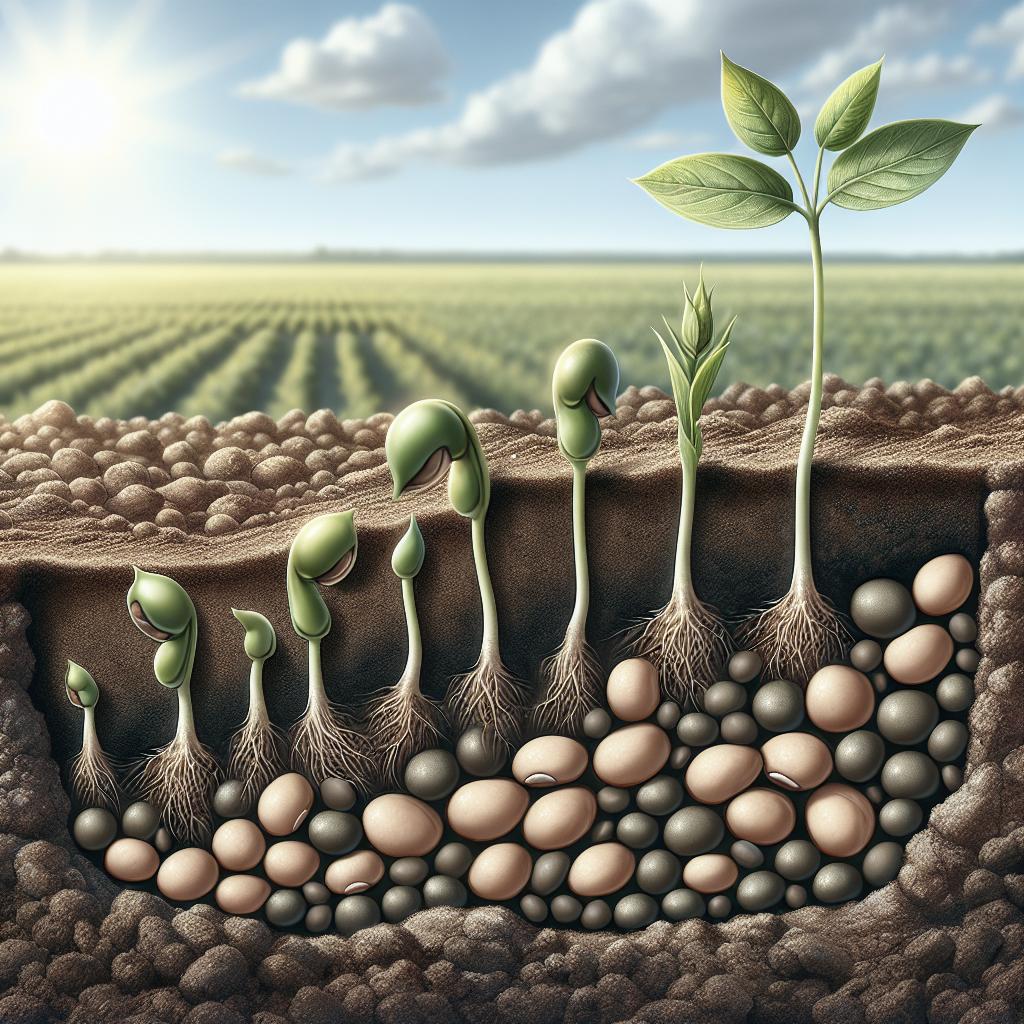Trees grace our world with beauty, shade, and oxygen, but their growth is a slow yet awe-inspiring process. This blog post delves into the various stages of tree growth, the factors influencing it, and some quick-growing species you can plant in your yard. We will also discuss how you can potentially speed up the growth process while shedding light on the pitfalls of hastening natural growth. By the end of this post, you will have a comprehensive understanding of how trees grow and what you can do to ensure they thrive efficiently and healthily.
Tree Growth Stages
1: Seed Germination
The life of a tree begins with a seemingly simple yet complex process known as seed germination. During this stage, a dormant seed absorbs water and begins to swell. With enough moisture and the right temperature, the embryo inside the seed breaks through its coat, marking the birth of a tree. This crucial stage can take anywhere from a few days to several weeks depending on the species.
For instance, oak seeds typically take around 6 to 12 weeks to germinate under optimal conditions. Factors such as soil quality, temperature, and water availability play a significant role in how well and quickly a seed will germinate. Proper care during this stage sets the stage for a healthy tree.
2: Seedling and Sapling Stage
Once the seed has germinated, it grows into a seedling. This is a delicate phase characterized by the development of the first leaves and roots. Typically lasting for a few months up to several years, the seedling stage is when the tree is most vulnerable to environmental stresses. During this period, it’s essential to protect the young plant from pests, extreme weather, and poor soil conditions.
As the tree matures into a sapling, its growth rate picks up. The sapling stage might last anywhere from 3 to 15 years depending on the species. Saplings are more resilient but still require regular care, including appropriate watering, mulching, and protection from larger herbivores.
Mature or Fruit-Bearing Tree
When a tree reaches the mature stage, it shows significant structural development, including a well-established root system, a sturdy trunk, and a branching network capable of bearing leaves, flowers, and fruits. Generally, a tree is considered mature when it starts to produce flowers or fruits, which typically happens anywhere between 10 and 30 years after germination, depending on the species.
Fruit-bearing trees like apples and cherries may achieve maturity quicker than taller species like oak or cedar, which can take several decades. Once mature, a tree continues to grow in height and girth, although at a slower rate. Regular maintenance and monitoring are still crucial to ensure the tree remains healthy and productive.
Factors that Affect Tree Growth
Various factors can significantly influence the rate at which trees grow. Environmental conditions such as soil quality, water availability, and temperature play critical roles. Trees in nutrient-rich soils with adequate water supply will generally grow faster than those in poor soil conditions.
Other factors include the type of species, availability of sunlight, and competition from other plants. Genetic factors also have a say in how quickly a tree grows. Understanding these factors can help you provide optimal conditions for tree growth in your yard or garden.
How to Make Trees Grow Faster?
Several strategies can be employed to encourage faster tree growth. One of the most effective methods is to ensure the tree is planted in high-quality soil with adequate nutrients. Regularly adding compost or mulch can improve the soil structure, thereby promoting root growth.
Using fertilizers designed for the specific tree species, ensuring proper watering, and providing adequate sunlight are other vital steps. Additionally, protecting the tree from pests and diseases can help it grow more quickly and healthily.
The Cons of Quick Growth
While the idea of speeding up tree growth might seem appealing, it comes with its set of disadvantages. Rapidly growing trees may develop weaker structures, making them more susceptible to breaking during storms or under heavy snow loads.
Additionally, quick growth can sometimes lead to a shorter lifespan, as the tree may not have time to develop the deep, robust root systems necessary for longevity. Thus, it is essential to strike a balance between encouraging healthy growth and fostering long-term stability.
Five Trees That Grow Fast to Plant in Your Yard
If you’re looking to add some greenery to your yard without waiting decades, several fast-growing tree species are worth considering. The Weeping Willow, known for its graceful, drooping branches, can grow up to 10 feet per year under optimal conditions.
Other quick-growers include the Hybrid Poplar, which can reach 5 to 8 feet per year, and the Northern Red Oak, capable of growing around 2 feet annually. The Silver Maple and the Green Giant Arborvitae are also excellent choices for those seeking rapid growth.
Need Tree Care? We’re here for you.
Whether you are planting new saplings or caring for mature trees, professional tree care services can provide the expertise needed to ensure your green friends thrive. From planting and pruning to disease management and emergency care, professional arborists can help maintain the health and beauty of your trees.
Investing in professional tree care not only enhances the aesthetic appeal of your yard but also contributes to a healthier environment. Reach out to local tree care services to discuss how you can promote healthy growth for your trees.
Lessons Learned
| Topic | Summary |
|---|---|
| Tree Growth Stages | From seed germination to mature fruit-bearing stages, understanding each phase helps in providing proper care. |
| Factors Affecting Growth | Soil quality, water, sunlight, and genetic factors play crucial roles. |
| How to Make Trees Grow Faster | Improving soil quality, using appropriate fertilizers, and ensuring proper watering are key methods. |
| Cons of Quick Growth | Faster growth can compromise structural integrity and longevity. |
| Fast-Growing Tree Species | The Weeping Willow, Hybrid Poplar, and Northern Red Oak are excellent choices for quick greenery. |
| Professional Tree Care | Engaging experts ensures your trees receive the best possible care for healthy growth. |


